The Making of Martha
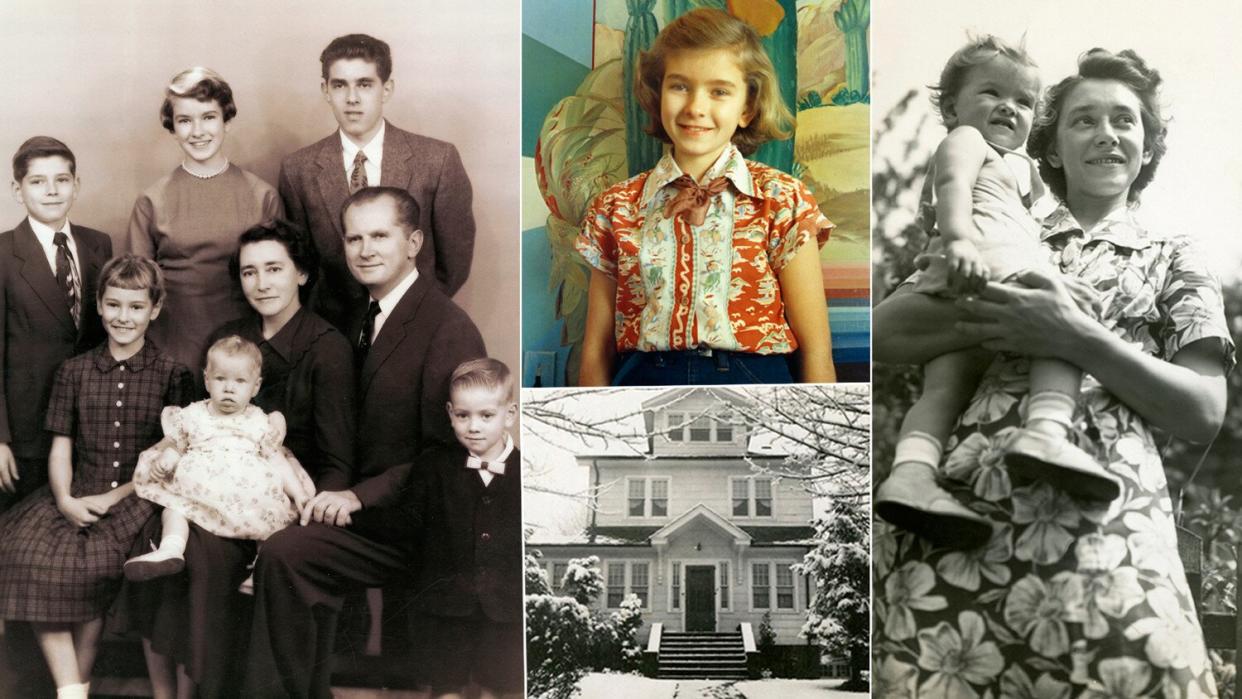
- Oops!Something went wrong.Please try again later.
- Oops!Something went wrong.Please try again later.
A Chip Off the Old Block
Clockwise from left: A mid-1950s portrait of the Kostyra clan: parents Martha and Edward, seated, with, from left, Frank, Kathryn, Martha, Laura, Erik, and George; Martha wearing her favorite cowgirl shirt in front of Chester Kulpa's mural in the family breakfast nook, circa 1949; Martha as a baby with "Big Martha," whom she considers her greatest teacher, circa 1942; The Kostyra family home at 86 Elm Place, circa 1950.
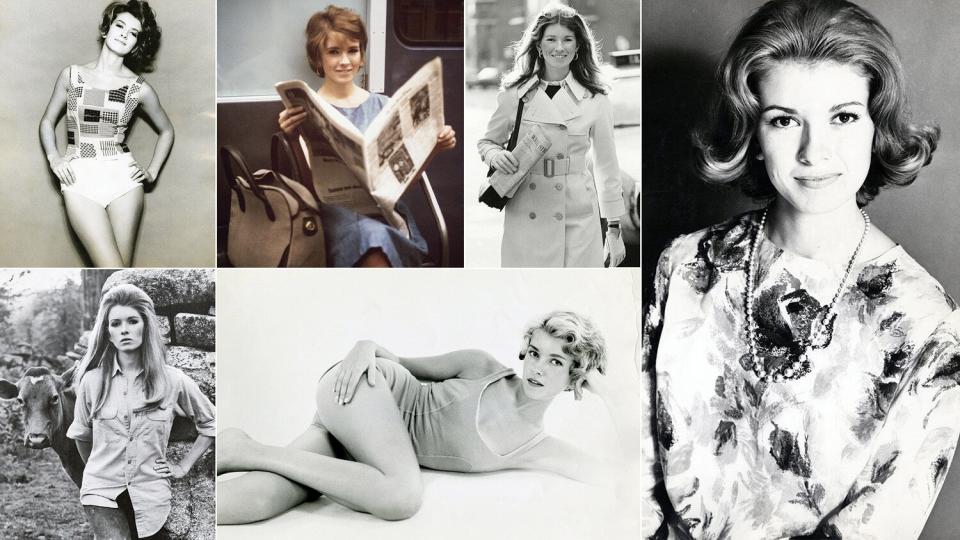
Putting Her Best Face Forward
During high school, the five-foot-nine-inch-tall Martha began modeling to earn extra money. Throughout her years at Barnard College and afterward, she appeared in fashion editorials and fashion shows, as well as in ads for popular brands, such as Breck, Clairol, and Lifebuoy Soap.
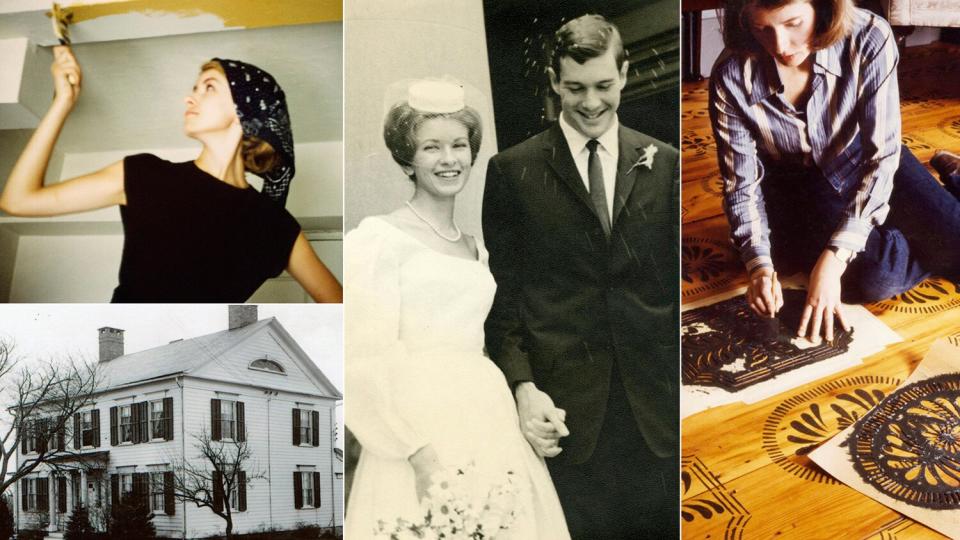
The Young Marrieds
While in college, Martha married Andrew Stewart, a Yale Law student. Top left: Martha painting the ceiling of the couple's New York City apartment, c. 1965. Bottom left: In 1971, the Stewarts bought an 1805 farmhouse on Turkey Hill Road South, in Westport, Connecticut, shown c. 1930. Center: For her wedding, in 1961, Martha wore a dress she made with her mother. Right: Stenciling the Turkey Hill living room floor, c. 1975.
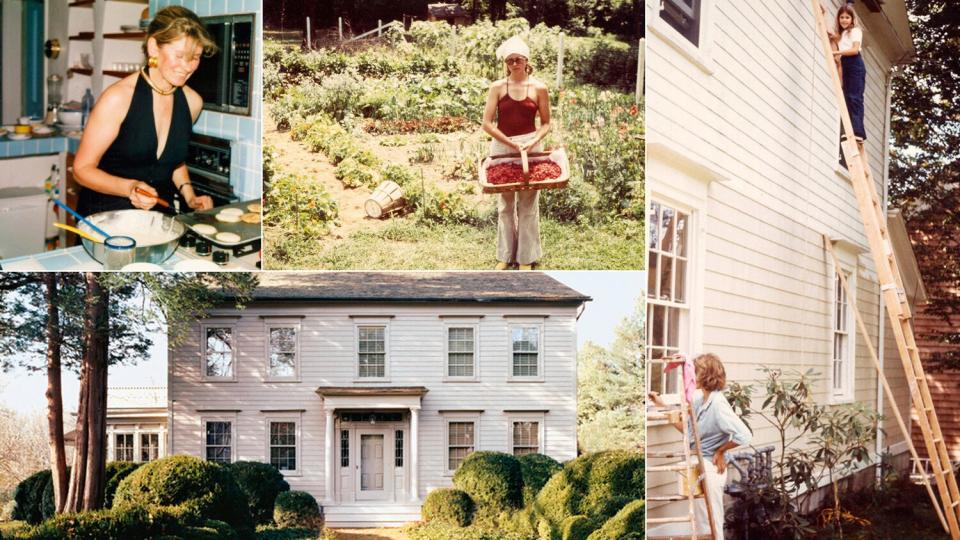
Work in Progress
Restoring Turkey Hill—where Martha started her catering business, grew gardens, and entertained constantly—was a decades-long project. Top center: At Turkey Hill, Martha planted and cultivated a large vegetable garden, shown in 1973, when she was harvesting vegetables and berries. Right: Martha and her then-8-year-old daughter, Alexis, painting the clapboard exterior, c. 1973. Top left: Martha cooking breakfast for friends in Saint Barts, 1980.
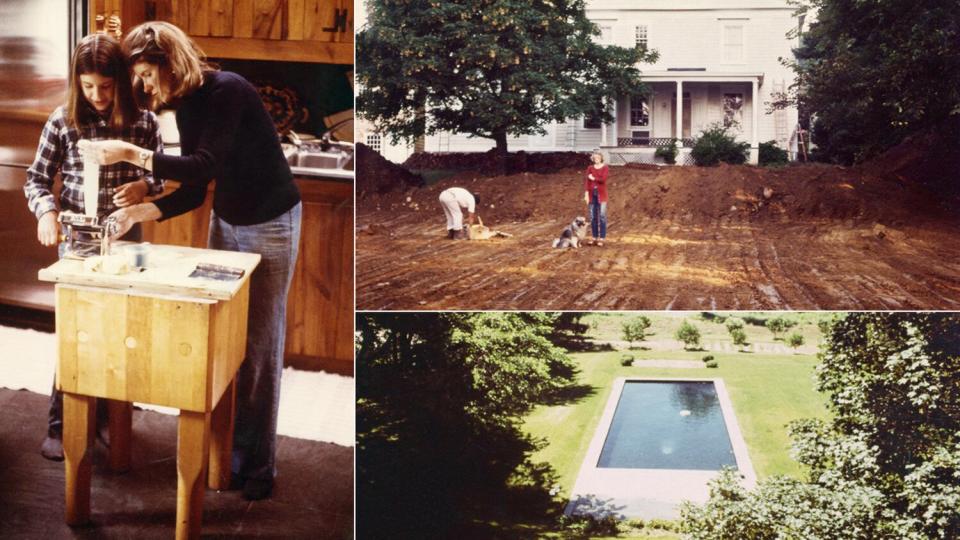
An Evolving Vision
Left: Teaching Alexis how to prepare homemade pasta on the pasta maker, c. 1975. Top right: Among the many projects at Turkey Hill was the addition of a large backyard pool, shown prior to ground breaking in 1975 (top) as the land was being graded, and when it was just finished, that same year (bottom).
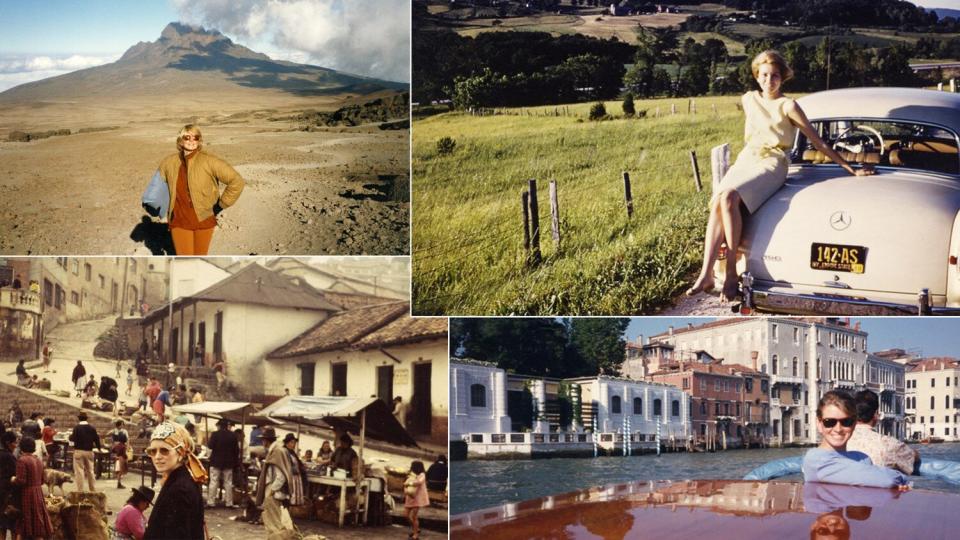
Around the World
Martha has always drawn inspiration from foreign cultures and cuisines. Even with her very full calendar, she makes time to travel to new places several times a year. And, no matter where she goes, she always has a camera—often two—at the ready. Clockwise from top right: Pausing, and posing, in the Vermont countryside on her July 1961 honeymoon; in Venice in the 1970s; a 1963 trip to Yugoslavia; Tanzania's Mount Kilimanjaro makes a dramatic backdrop for this 1990s photo.
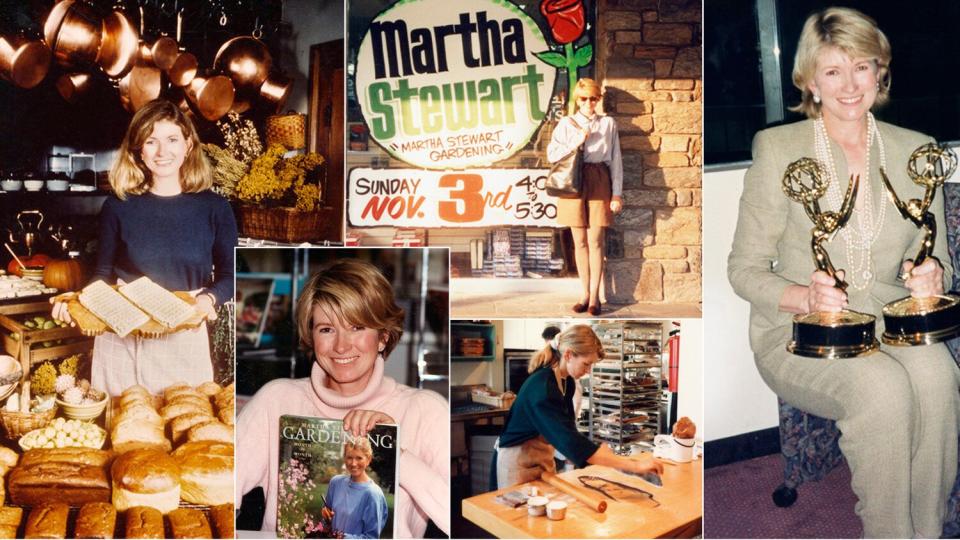
A Handmade Career
In the early 1970s, Martha turned the things she loved to do most—cooking, gardening, crafting, decorating—into a new career, first as a caterer, then as an author, a magazine creator, a TV host, a merchandising whiz, and on it goes. With each new endeavor came successes and challenges, which encouraged her to keep building her brand. From left: Martha baking at one of her seminars in the 1980s; A stop on the book tour for Martha Stewart Gardening Month by Month, 1991; At a book signing; Martha during her catering days. Winning two Daytime Emmys in 1995—one for best service show host and one for best service show—was a thrill and an honor (Martha has won a total of 19 Emmys).
Q&A with Martha Stewart, by John Maeda
To mark the launch of the first Martha Stewart Living digital magazine for the iPad in November 2010, Martha sat down for a conversation about the interplay between creativity and technology with longtime friend John Maeda, then president of the Rhode Island School of Design (RISD). Maeda is a computer scientist and graphic designer, and a former associate director of research of MIT Media Lab.
John Maeda So you've launched it! You've come a long way since I first met you at the Media Lab. I'm curious, how did this iPad issue come about?
Martha Stewart I love to think about the future. I was an early adopter of the computer. I remember buying my first IBM PC—in 1981, I think—and not really understanding it, choosing a cabinet to fit it in. It was very boxy, and deep.
JM Yes! They were heavy, too.
MS And their backs stuck out so far, like early televisions! But it worked. I learned as much as I could on that PC, and it's been fast-forward ever since.
JM It wasn't that long ago that computers did so little. Now we live in an age where you can tweet something and within seconds, hundreds, thousands of people can talk back. Does that ever make you feel that technology is good but also bad in some way?
MS I am very torn. I actually lose sleep over this. I find that it's an isolationist kind of world now. People would rather communicate by e-mail than by phone or in person. They don't have to face you; they don't have to see your eyes.
JM The irony of Facebook is that you never have to see someone's face.
MS That's right. Facebook serves an enormous purpose, but I don't ever want to use it just for the sake of using it.
JM When I was a kid, my grandfather, who was a carpenter, asked me, "So, what do you want to do when you grow up?" I said, "This computer stuff sounds interesting." He looked at me and said, "That's all good and fine, but what happens in the future? Who will grow the food if everyone is on the computer?"
MS That's what worries me. We don't want factory farming—those poor chickens are treated like machines. I would rather eat a synthetic egg than an egg from a tortured chicken. I'd rather give up eggs altogether.
JM My father was a cook, and when people ask me how I learned to design, I always tell them, "Very simply. By watching my dad cook and present food." Did you have a similar experience?
MS Totally. But it wasn't just about food; it was about everything. If you had to fix a faucet, you had to learn what a washer was, what a wrench was, what the correct wrench was. When I moved with my ex-husband to an old house, I knew how to build a stone wall because I had built one with my father.
JM It sounds as if your family experience made you sort of fearless.
MS I'd call it a lack of trepidation. Sometimes I shake if I have to do something that I've never done before—maybe not noticeably, but inside. But I'll do it, because I know it's not an insurmountable task; I've done plenty of tasks in my life.
JM I'm curious about what it means to you to be a creative leader, someone who is not afraid to get her hands dirty and make things happen. It seems as if you have taken the creativity you'd use in making any project for the home or the garden and applied it to business.
MS I try. Ever since I started Martha Stewart Living, I've said there's no job too big or too small for me to do. So if the jar of honey has to be filled, I'll fill it, but I'll also scrub the numbers. I wanted to make creativity equal to business, and I relish the fact that many of my editors and art directors became very competent in business. Sometimes business is frustrating, dealing with the bankers, accountants, quarterlies. You have to figure out how to do that and at the same time develop and create and produce.
JM A lot of pundits today are saying that art and design education don't matter; we shouldn't teach them in schools. But at RISD, we believe that art and design education can be taken to the max. What do you think?
MS I think it's really terribly important—and, by the way, I think we're one of the largest employers of RISD graduates! We're very proud of that. When I see grammar schools lightening courses to just the three Rs, that's very disappointing to me. It's cheating our youth by not offering them a way to express themselves. I don't think we, as a nation, can exist without creative input.
Details
This story was originally published in the iPad special issue "Boundless Beauty" in November 2010.

